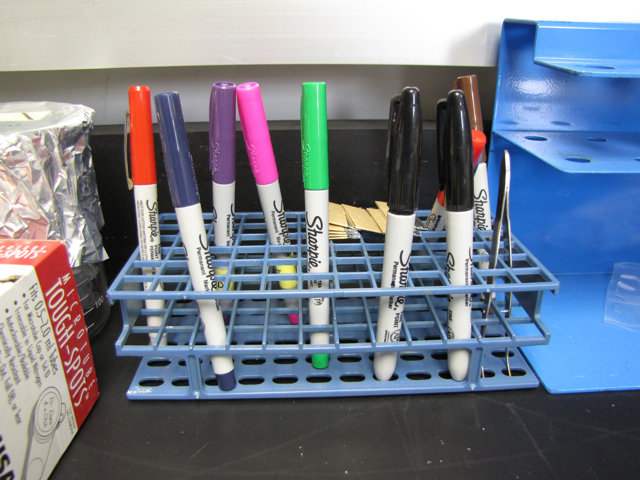
Trial #37: maximum creativity and minimum limitations
I forgot about this stage of science when I wrote about the monotony of data collection. A few of my shipmates agree that this stage may also be very time consuming, with the potential for fun. This is the testing stage. How do you measure something that no one has ever measured before? or in your lab or field site? Does your equipment work? If not, how can you make it work? What did they mean in the protocol that you are trying to follow? This part of science is really about engineering. This is crucial in the question of how do we know.
Scientific seafloor drilling over the last 40 years has developed many techniques and systems to study the seafloor rocks. From simple scales used to weigh samples to the scanning instruments, so much has been modified, tinkered with, and re-created to specifically deal with ship board issues (the boat is always vibrating and moving) as well as specific needs for studying the rocks. The technicians have to know the instruments inside and out and have the ability troubleshoot out at sea. I’m in the process of editing a video about how we measure weight on the ship.
On this cruise, the scientists are using mostly the tried and true methods. One new instrument caught my eye. Are they checking the heartbeat of the core? Yuzuru is testing the release of strain in this piece of core. This method has been used in Japan on core from the subduction zone there. This is a first for the JR, so I’m sure he spent a lot of time setting it up and making sure that it is really working here. Strain is very important to understand in a subduction zone – this is where plates are moving into each other.
(picture from Lisa)
My high school interns learn quickly about this stage. Things rarely go smoothly the first time. I remember one student who spent much of the summer helping with the secondary project becuase an instrument was broken for the primary project. He got to learn a lot about repairing the instrument, rather than collecting data from it. I’m looking forward to Saturday when I’ll be talking with some of the high school interns from last summer.
We learn and teach in school that science the results of trials. It sounds so simple. Trials. Just add X and Y a few times and, voila, you have the answer Z. The part about the many many trials is not explained or emphasized. Nor is the part about how to really add X and Y. It is the details that are so important to compare results. Or who figured out how to measure the answer Z. How do you really know that the answer is Z rather than Z +1. Some of this testing phase is where the creativity of scientists and engineers come out.
We are FAR from understanding everything about how the Earth system works, let alone how to design all the tools and experiments to get us there. That is the exciting thing about science. There is still so much to learn and do. Marta says that her job as an academic scientist is the best in the world because it has maximum creativity and minimum limitations. She has a question about the chemistry and fluid flow in subduction zones and she goes to figure it out. Marta has been involved in deep earth drilling for a long time and continues to ask new questions.
There is so much still to discover. We don’t have all the answers or even all the questions.